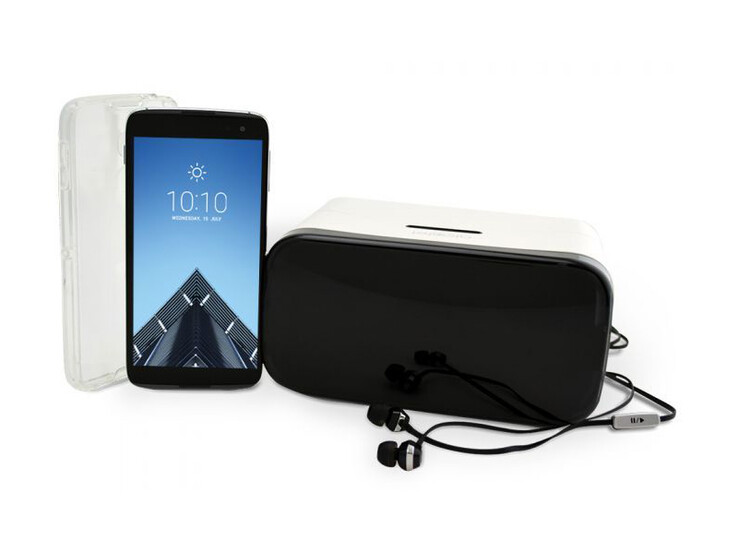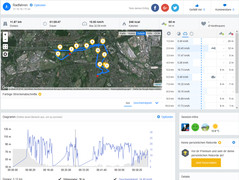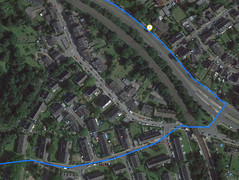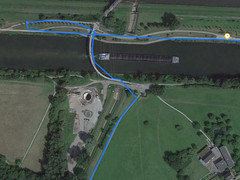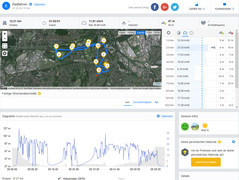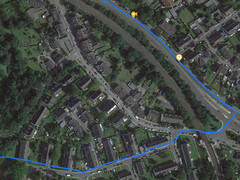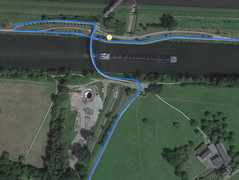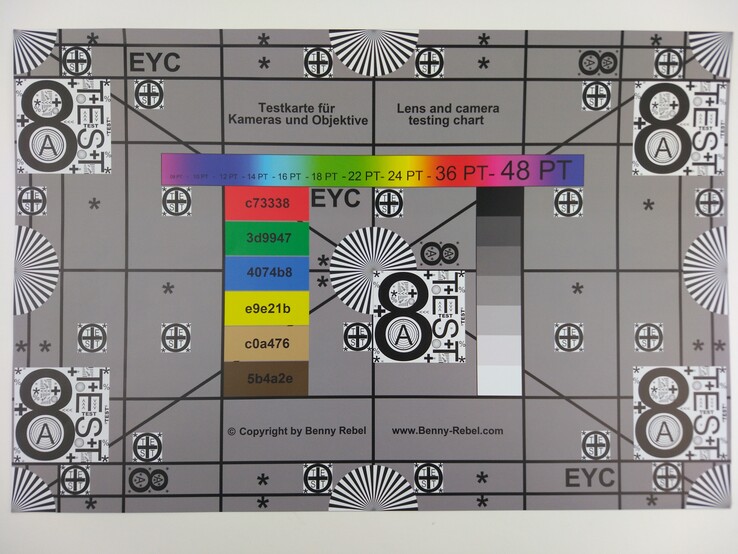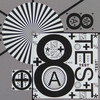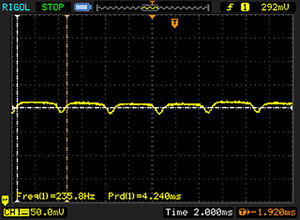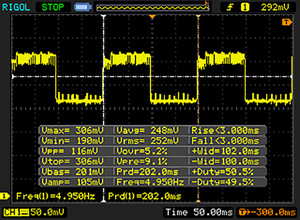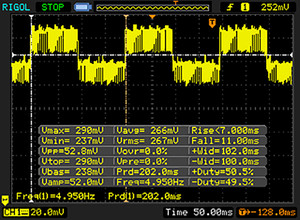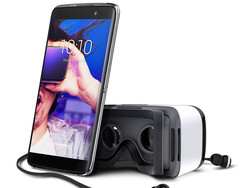Breve análisis del Smartphone Alcatel One Touch Idol 4S
Top 10 Análisis
» Top 10 Portátiles Multimedia
» Top 10 Portátiles de Juego
» Top 10 Portátiles de Juego ligeros
» Top 10 Portátiles Asequibles de Oficina/Empresa
» Top 10 Portátiles de Juego Ligeros
» Top 10 Portátiles de Oficina/Empresa Premium
» Top 10 Estaciones de Trabajo
» Top 10 Subportátiles
» Top 10 Ultrabooks
» Top 10 Convertibles
» Top 10 Tablets
» Top 10 Tablets Windows
» Top 10 Tablets de menos de 250 Euros
» Top 10 Phablets (>5.5")
» Top 10 Smartphones
» Top 10 Smartphones (≤5")
» Top 10 Smartphones de menos de 300 Euros
» Top 10 Smartphones de menos de 120 Euros
» Top 10 Portátiles de menos de 1000 Euros
» Top 10 Portátiles de menos de 500 Euros
» Top 10 Portátiles de menos de 300 Euros
» Los Mejores Displays de Portátiles Analizados por Notebookcheck
| Networking | |
| iperf3 transmit AX12 | |
| OnePlus 3T | |
| ZTE Axon 7 | |
| Alcatel One Touch Idol 4S | |
| iperf3 receive AX12 | |
| ZTE Axon 7 | |
| OnePlus 3T | |
| Alcatel One Touch Idol 4S | |
| |||||||||||||||||||||||||
iluminación: 92 %
Brillo con batería: 625 cd/m²
Contraste: ∞:1 (Negro: 0 cd/m²)
ΔE Color 5.9 | 0.5-29.43 Ø5
ΔE Greyscale 3.8 | 0.57-98 Ø5.3
Gamma: 2.27
| Alcatel One Touch Idol 4S AMOLED, 2560x1440, 5.50 | Honor 8 IPS, 1920x1080, 5.20 | ZTE Axon 7 AMOLED, 2560x1440, 5.50 | OnePlus 3T Optic-AMOLED, 1920x1080, 5.50 | BlackBerry DTEK60 AMOLED, 2560x1440, 5.50 | |
|---|---|---|---|---|---|
| Screen | -16% | -9% | -30% | -6% | |
| Brightness middle | 625 | 451 -28% | 328 -48% | 421 -33% | 590 -6% |
| Brightness | 639 | 443 -31% | 334 -48% | 430 -33% | 608 -5% |
| Brightness Distribution | 92 | 93 1% | 88 -4% | 84 -9% | 88 -4% |
| Black Level * | 0.4 | ||||
| Colorchecker dE 2000 * | 5.9 | 5.4 8% | 4.6 22% | 7.1 -20% | 6.6 -12% |
| Colorchecker dE 2000 max. * | 14.6 | 9.9 32% | 14.7 -1% | 15.3 -5% | 14.3 2% |
| Greyscale dE 2000 * | 3.8 | 6.7 -76% | 2.8 26% | 6.8 -79% | 4.3 -13% |
| Gamma | 2.27 97% | 2.33 94% | 2.29 96% | 2.23 99% | 1.88 117% |
| CCT | 7196 90% | 8262 79% | 6612 98% | 7866 83% | 6966 93% |
| Contrast | 1128 |
* ... más pequeño es mejor
Parpadeo de Pantalla / PWM (Pulse-Width Modulation)
| Parpadeo de Pantalla / PWM detectado | 235.8 Hz | ≤ 100 % de brillo | |
La retroiluminación del display parpadea a 235.8 Hz (seguramente usa PWM - Pulse-Width Modulation) a un brillo del 100 % e inferior. Sobre este nivel de brillo no debería darse parpadeo / PWM. La frecuencia de 235.8 Hz es relativamente baja, por lo que la gente sensible debería ver parpadeos y padecer fatiga visual por la pantalla (usado al brillo indicado a continuación). Comparación: 53 % de todos los dispositivos testados no usaron PWM para atenuar el display. Si se usó, medimos una media de 17900 (mínimo: 5 - máxmo: 3846000) Hz. | |||
Tiempos de respuesta del display
| ↔ Tiempo de respuesta de Negro a Blanco | ||
|---|---|---|
| 6 ms ... subida ↗ y bajada ↘ combinada | ↗ 3 ms subida | |
| ↘ 3 ms bajada | ||
| La pantalla mostró tiempos de respuesta muy rápidos en nuestros tests y debería ser adecuada para juegos frenéticos. En comparación, todos los dispositivos de prueba van de ##min### (mínimo) a 240 (máximo) ms. » 13 % de todos los dispositivos son mejores. Esto quiere decir que el tiempo de respuesta medido es mejor que la media (21.5 ms) de todos los dispositivos testados. | ||
| ↔ Tiempo de respuesta 50% Gris a 80% Gris | ||
| 18 ms ... subida ↗ y bajada ↘ combinada | ↗ 7 ms subida | |
| ↘ 11 ms bajada | ||
| La pantalla mostró buenos tiempos de respuesta en nuestros tests pero podría ser demasiado lenta para los jugones competitivos. En comparación, todos los dispositivos de prueba van de ##min### (mínimo) a 636 (máximo) ms. » 27 % de todos los dispositivos son mejores. Esto quiere decir que el tiempo de respuesta medido es mejor que la media (33.7 ms) de todos los dispositivos testados. | ||
| AnTuTu v6 - Total Score | |
| OnePlus 3T | |
| BlackBerry DTEK60 | |
| ZTE Axon 7 | |
| Honor 8 | |
| Alcatel One Touch Idol 4S | |
| BQ Aquaris X5 Plus | |
| Geekbench 4.0 | |
| 64 Bit Single-Core Score | |
| OnePlus 3T | |
| Honor 8 | |
| Alcatel One Touch Idol 4S | |
| ZTE Axon 7 | |
| BQ Aquaris X5 Plus | |
| BlackBerry DTEK60 | |
| 64 Bit Multi-Core Score | |
| Honor 8 | |
| OnePlus 3T | |
| ZTE Axon 7 | |
| Alcatel One Touch Idol 4S | |
| BQ Aquaris X5 Plus | |
| BlackBerry DTEK60 | |
| GFXBench (DX / GLBenchmark) 2.7 | |
| T-Rex Onscreen | |
| OnePlus 3T | |
| ZTE Axon 7 | |
| Honor 8 | |
| BQ Aquaris X5 Plus | |
| OnePlus One | |
| Alcatel One Touch Idol 4S | |
| BlackBerry DTEK60 | |
| 1920x1080 T-Rex Offscreen | |
| OnePlus 3T | |
| ZTE Axon 7 | |
| Honor 8 | |
| Alcatel One Touch Idol 4S | |
| BQ Aquaris X5 Plus | |
| OnePlus One | |
| BlackBerry DTEK60 | |
| GFXBench 3.0 | |
| on screen Manhattan Onscreen OGL | |
| OnePlus 3T | |
| ZTE Axon 7 | |
| Honor 8 | |
| BQ Aquaris X5 Plus | |
| OnePlus One | |
| Alcatel One Touch Idol 4S | |
| 1920x1080 1080p Manhattan Offscreen | |
| OnePlus 3T | |
| ZTE Axon 7 | |
| Honor 8 | |
| Alcatel One Touch Idol 4S | |
| BQ Aquaris X5 Plus | |
| OnePlus One | |
| GFXBench 3.1 | |
| on screen Manhattan ES 3.1 Onscreen | |
| OnePlus 3T | |
| ZTE Axon 7 | |
| Honor 8 | |
| BQ Aquaris X5 Plus | |
| Alcatel One Touch Idol 4S | |
| 1920x1080 Manhattan ES 3.1 Offscreen | |
| OnePlus 3T | |
| ZTE Axon 7 | |
| Honor 8 | |
| BQ Aquaris X5 Plus | |
| Alcatel One Touch Idol 4S | |
| PCMark for Android - Work performance score | |
| Honor 8 | |
| OnePlus 3T | |
| ZTE Axon 7 | |
| BQ Aquaris X5 Plus | |
| Alcatel One Touch Idol 4S | |
| BlackBerry DTEK60 | |
| OnePlus One | |
| Octane V2 - Total Score | |
| Honor 8 | |
| OnePlus 3T | |
| BlackBerry DTEK60 | |
| Alcatel One Touch Idol 4S | |
| ZTE Axon 7 | |
| Mozilla Kraken 1.1 - Total | |
| Alcatel One Touch Idol 4S | |
| ZTE Axon 7 | |
| Honor 8 | |
| BlackBerry DTEK60 | |
| OnePlus 3T | |
| JetStream 1.1 - Total Score | |
| Honor 8 | |
| BlackBerry DTEK60 | |
| OnePlus 3T | |
| Alcatel One Touch Idol 4S | |
| ZTE Axon 7 | |
* ... más pequeño es mejor
| Alcatel One Touch Idol 4S 32 GB eMMC Flash | Honor 8 32 GB eMMC Flash | ZTE Axon 7 64 GB eMMC Flash | OnePlus 3T 64 GB UFS 2.0 Flash | BlackBerry DTEK60 32 GB eMMC Flash | |
|---|---|---|---|---|---|
| AndroBench 3-5 | 14% | 67% | 212% | 7% | |
| Sequential Write 256KB SDCard | 56.3 | 23.59 -58% | 51.3 -9% | 58.5 4% | |
| Sequential Read 256KB SDCard | 74.6 | 53.7 -28% | 78.4 5% | 78.8 6% | |
| Random Write 4KB | 14.45 | 31.5 118% | 16.22 12% | 74.4 415% | 15.1 4% |
| Random Read 4KB | 36.53 | 34.16 -6% | 121.1 232% | 123.6 238% | 43.1 18% |
| Sequential Write 256KB | 80.8 | 119.3 48% | 150.9 87% | 165.3 105% | 79 -2% |
| Sequential Read 256KB | 231.9 | 247.5 7% | 406.5 75% | 436.4 88% | 257.4 11% |
(±) The maximum temperature on the upper side is 42.1 °C / 108 F, compared to the average of 35 °C / 95 F, ranging from 21.9 to 56 °C for the class Smartphone.
(+) The bottom heats up to a maximum of 39.8 °C / 104 F, compared to the average of 33.8 °C / 93 F
(+) In idle usage, the average temperature for the upper side is 26.5 °C / 80 F, compared to the device average of 32.7 °C / 91 F.
Alcatel One Touch Idol 4S audio analysis
(+) | speakers can play relatively loud (88.9 dB)
Bass 100 - 315 Hz
(-) | nearly no bass - on average 25.6% lower than median
(±) | linearity of bass is average (11.5% delta to prev. frequency)
Mids 400 - 2000 Hz
(+) | balanced mids - only 2.7% away from median
(+) | mids are linear (5.2% delta to prev. frequency)
Highs 2 - 16 kHz
(+) | balanced highs - only 4.7% away from median
(+) | highs are linear (4.3% delta to prev. frequency)
Overall 100 - 16.000 Hz
(±) | linearity of overall sound is average (18% difference to median)
Compared to same class
» 11% of all tested devices in this class were better, 7% similar, 82% worse
» The best had a delta of 12%, average was 38%, worst was 134%
Compared to all devices tested
» 32% of all tested devices were better, 8% similar, 60% worse
» The best had a delta of 4%, average was 25%, worst was 134%
OnePlus 3T audio analysis
(+) | speakers can play relatively loud (84.3 dB)
Bass 100 - 315 Hz
(-) | nearly no bass - on average 24.6% lower than median
(±) | linearity of bass is average (7.2% delta to prev. frequency)
Mids 400 - 2000 Hz
(+) | balanced mids - only 4.6% away from median
(+) | mids are linear (4.6% delta to prev. frequency)
Highs 2 - 16 kHz
(±) | higher highs - on average 7.1% higher than median
(+) | highs are linear (2.8% delta to prev. frequency)
Overall 100 - 16.000 Hz
(±) | linearity of overall sound is average (20.9% difference to median)
Compared to same class
» 32% of all tested devices in this class were better, 8% similar, 60% worse
» The best had a delta of 12%, average was 38%, worst was 134%
Compared to all devices tested
» 52% of all tested devices were better, 8% similar, 41% worse
» The best had a delta of 4%, average was 25%, worst was 134%
| Off / Standby | |
| Ocioso | |
| Carga |
|
| Alcatel One Touch Idol 4S 3000 mAh | Honor 8 3000 mAh | ZTE Axon 7 3250 mAh | OnePlus 3T 3400 mAh | BlackBerry DTEK60 3000 mAh | |
|---|---|---|---|---|---|
| Power Consumption | -31% | 3% | -37% | -12% | |
| Idle Minimum * | 0.76 | 0.78 -3% | 0.64 16% | 0.61 20% | 0.7 8% |
| Idle Average * | 1.02 | 1.89 -85% | 0.84 18% | 1.77 -74% | 1.13 -11% |
| Idle Maximum * | 1.04 | 2.02 -94% | 0.87 16% | 1.81 -74% | 1.2 -15% |
| Load Average * | 4.4 | 5.28 -20% | 6.02 -37% | 6.67 -52% | 6.52 -48% |
| Load Maximum * | 10.4 | 5.44 48% | 10.45 -0% | 10.98 -6% | 9.75 6% |
* ... más pequeño es mejor
| Alcatel One Touch Idol 4S 3000 mAh | Honor 8 3000 mAh | ZTE Axon 7 3250 mAh | OnePlus 3T 3400 mAh | BlackBerry DTEK60 3000 mAh | |
|---|---|---|---|---|---|
| Duración de Batería | |||||
| WiFi v1.3 | 415 | 499 20% | 411 -1% | 494 19% | 779 88% |
Pro
Contra
¿Puede el Alcatel One Touch Idol 4S competir con los rivales? No. El smartphone puede justificar su precio con el noble chasis, el buen display, y los múltiples accesorios, pero los competidores tienen menos defectos. El Idol 4S sufre un poco de una mediocre calidad de vozs, la mala cámara frontal, y los resultados relativamente malos en los tests de rendimiento y aguante.
Un buen smartphone corriente con un chasis genial y un display brillante, pero la competencia es algo mejor.
El headset VR es más un truco, y la funcionalidad está limitada en comparación con el Samsung's Gear VR. El botón Boom anunciado tampoco nos pudo convencer en la práctica. El Alcatel One Touch Idol 4S no es una mala elección, pero hay mejores dispositivos en el segmento de precios de hasta 450 Euros.
Ésta es una versión acortada del análisis original. Puedes leer el análisis completo en inglés aquí.
Alcatel One Touch Idol 4S
-
12/29/2016 v6(old)
Andreas Osthoff


 Deutsch
Deutsch English
English Español
Español Français
Français Italiano
Italiano Nederlands
Nederlands Polski
Polski Português
Português Русский
Русский Türkçe
Türkçe Svenska
Svenska Chinese
Chinese Magyar
Magyar